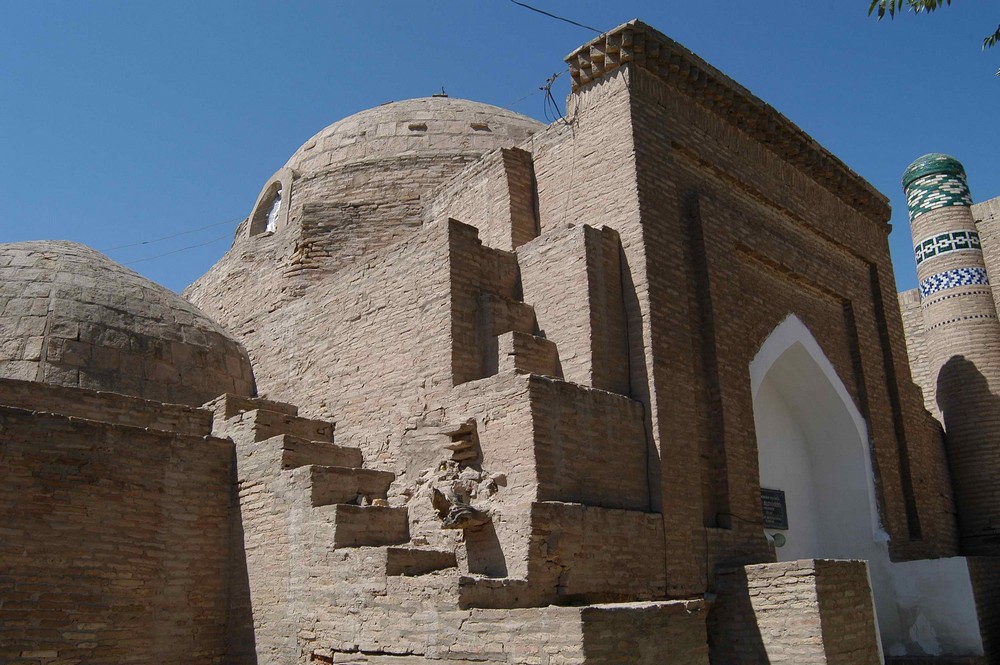
| |
| [+] Company | |
| [+] Tours | |
| [+] Travel Services | |
| [+] Destinations | |
| [+] Directory | |

|
| Travel News | |||
| |||
| |||
|
| read all news |
|
|
|
|
|
| Last updated: 10 Jan 2017 |
Mausoleum of Seyid Ala Ad-Din, Khiva, Uzbekistan
Mausoleum of Khorezmian sheikh Seyid Ala Ad-Din (died in 1303) is one of the most ancient and esteemed historical places of Khiva.
Actually the mausoleum is very unpretentious low dome construction deeply ingrown in the ground. Inside the mausoleum there is a nice majolica gravestone of the 14th century decorated with a vegetative ornament and Arabian inscriptions. Later to the tomb there was built a memorial domical-portal mosque. The whole brick complex of the mausoleum had been formed by the 19th century and repaired by order of Alla-kuli-khan in 1825.
 |
| Mausoleum of Seyid Ala Ad-Din |
Actually the mausoleum is very unpretentious low dome construction deeply ingrown in the ground. Inside the mausoleum there is a nice majolica gravestone of the 14th century decorated with a vegetative ornament and Arabian inscriptions. Later to the tomb there was built a memorial domical-portal mosque. The whole brick complex of the mausoleum had been formed by the 19th century and repaired by order of Alla-kuli-khan in 1825.
CompanyAbout Aba Travel CompanyContacts Testimonials Mobile version of the website Auto screen selection |
Travel ServicesTourist Visas for UzbekistanUzbekistan Airlines Hotels in Uzbekistan Tourist Maps Tour guides Tourist Transport |
Travel AdviceTravel Guide UzbekistanUzbekistan FactsTourism in Uzbekistan |
DestinationsUzbekistanKyrgyzstan Kazakhstan Tajikistan Turkmenistan |
ToursTours in UzbekistanTours in Kyrgyzstan Tours in Tashkent Tours in Samarkand Tours in Bukhara Tours in Khiva |
|
Aba Travel Company, Tashkent, Uzbekistan
Legal Name: OOO Aba Trip Plus
Sarykul 9 Str.
tel:
100167, Tashkent, Uzbekistan
|
License No. T-0045-14 of Uzbek Tourism Authority 'UzbekTourism'
| ||||||||||||
|
Copyright © 2001. All rights reserved. All material/content from this website can be reproduced in electronic or printed form if a reference (a hyperlink for the Web or citation for printed media) is made to abasayyoh.com | |||||||||||||






























